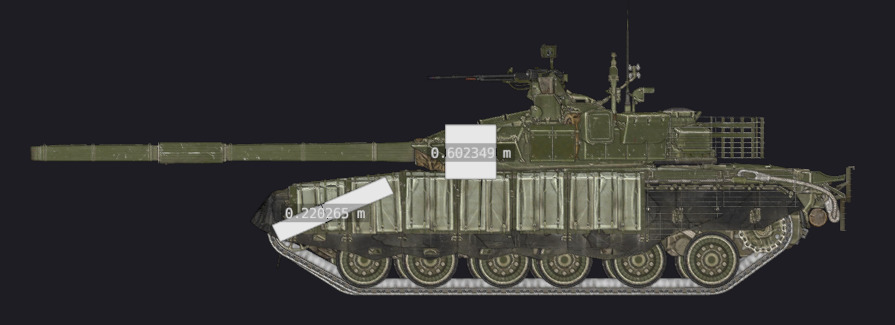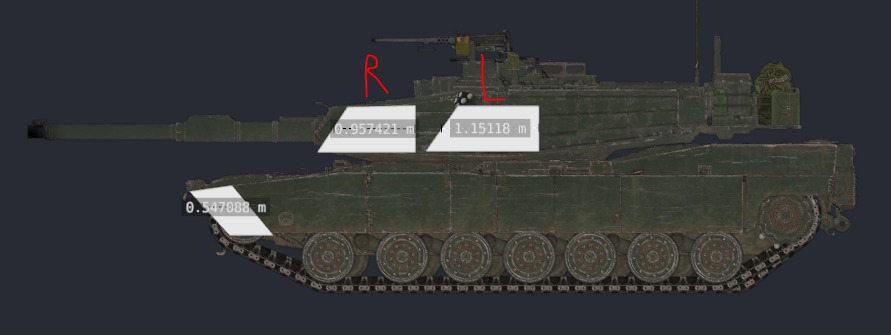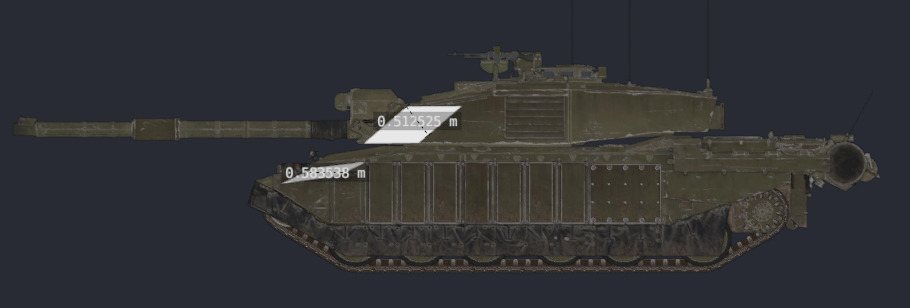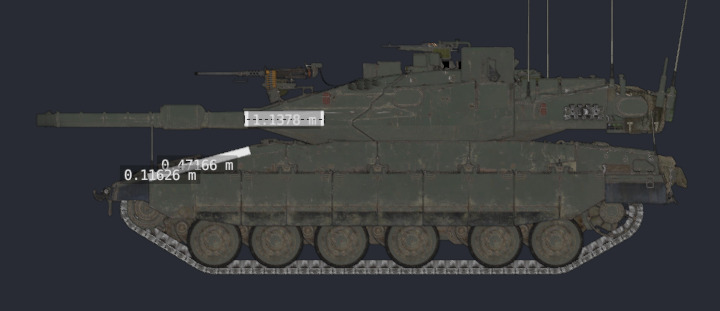You probably never wondered, but I think some people would find it interesting, what armor could existing tanks potentially have if their armor packages were pure steel. Pure heavy metal, no ceramics! In the end, you could take nominal numbers and multiply them by around 1.78x to find about depleted uranium (DU) armor potential, if you’re feeling American or Soviet-Kazakh.
P.S. the steel value in this case is 1.00x of WW2 steel, note that in-game MBTs usually have 1.15x steel protection equivalent due to high hardness.
Russia:
Spoiler
T-80BVM:

220mm steel UFP, around 600mm turret front. 220mm at 68deg gives around 587mm effective armor. Wondering why it’s better than that in the game, even ignoring ERA?
Germany (identical to Sweden, in game Leo2A7/Strv122 have same thickness but different materials):
Spoiler
Leopard 2A7: 
355mm UFP and almost 950mm thick turret. Notice that despite such thin hull, it has additional 100mm composite screens, which I didn’t include.
Leopard 2PL: 
Polish upgrade introduces thick composite screens on the turret, if they were made of steel the turret thickness would be 1,4m (the turret armor itself is slightly reduced).
America:
Spoiler
M1A2 Abrams: 
420mm thick hull, 960mm average right cheek and 1.15m average left cheek. Now, do you remember the DU Abramses? Imagine having hull effective armor of 748mm and turret cheeks armor between 1700mm & 2050mm… say goodbye to the chassis with insane uranium’s mass, though!
Britain:
Spoiler
Challenger 2: 
While Challie gets seemingly adequate armor - the angles are pretty decent, it actually has poor thickness. And we all know how badly it’s placed, too… 580mm LOS hull armor, 510mm thick turret.
France:
Spoiler
Leclerc: 
Around 620mm turret next to the empty mantlet. Since there are no visible weld paths, I added data from KNDS website. Pretty much perfect to defeat any Russian munitions, if it was full-steel!
Italy:
Spoiler
Ariete: 
It would have 195mm thick hull, giving it 380mm effective armor, and 310mm thick turret would give it 540mm LOS. Even full-metal armor won’t save Ariete! The STEEL screen from WAR kit would give it additional 150mm armor, giving it potential 810mm of effective armor.
Israel:
Spoiler
Merkava Mk.4: 
It’s 115mm UFP gives it 470mm LOS protection, while the turret composite is around 1.13m in it’s thickest parts. Make it steel, and the composites would be extremely bouncy!
The rest is being worked on, im having electricity & forum malfunctions… (empty spoilers)
Japan:
Spoiler
konnichiwa
China:
Spoiler
nihao
If you wanna see some other tanks, e.g. older ones, let me know in the replies!


